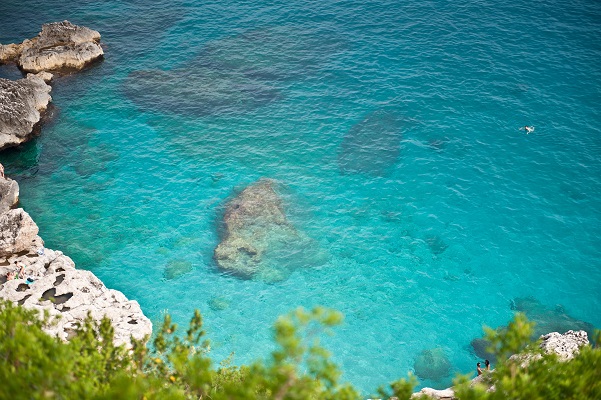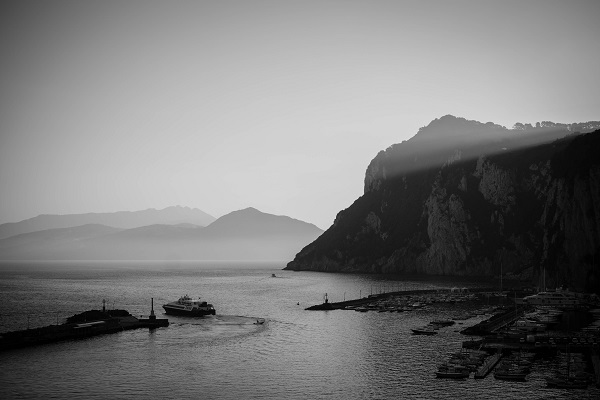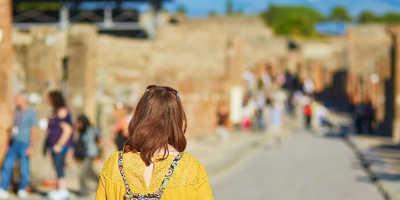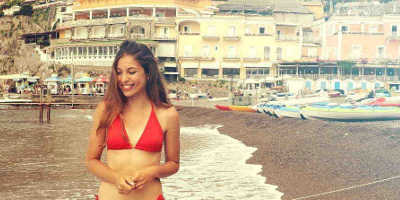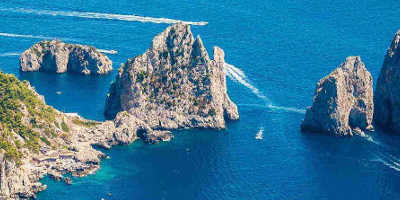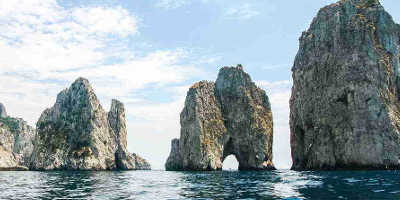The Fascinating History of Capri
An island of wealth for the wealthy, Capri reveals the secrets of the super-rich in its elegant villas and steep cliffs.
Capri was first “discovered” by emperor Augustus in the early years of the Roman Empire. He often resided there and built many temples, villas and gardens as a way of having his own private paradise. Modern excavations however show the island to have been inhibited long before Augustus discovered it. Before the Romans, it was the Greeks who settled on Capri from the 8th century BC onwards, as evidenced by the Phoenician steps that connect Marina Grande with Anacapri (now the current town Capri). Despite its name, archaeologists have confirmed from the stone and its epigraphs, that the steps were in fact built by Greek colonists. It remained a Greek colony until Augustus took it in exchange for Aenaria (Ischia), an island in the Tyrrhenian Sea.
We should not blame Augustus too much for his takeover though, as it was his conservation of ancient remains that modern historians were able to trace back Capri’s history. It was the Romans who discovered evidence of human settlement, which Augustus ordered to be displayed in his garden. Amongst their findings, were weapons of stone, giant bones and the remains of animals that had disappeared tens of thousands of years before the Roman Empire, as well as traces of Stone-Age occupants. The Roman historian Suetonius described the interest shown by Augustus in these remains and his eagerness to preserve them. Augustus dedicated a whole museum to their findings.
Modern excavations of Augustus’s villa have traced these remains back to the Neolithic period and the Bronze Age. These time periods are staggering for such a tiny island. Capri is made up of a single block of limestone with an area of 4 square miles, rising to 1,932 feet. The fact that evidence of inhabitants of the island can be traced back to around 12,000 years ago is incredible! The Neolithic period, also known as the New Stone Age, saw the first developments in farming, which might go some way in explaining the large number of animal remains. This might also explain the etymology of the islands name, Capri, which has several meanings. The Romans referred to it as the “goat island”, from the Latin capreae meaning goats. This is similar to the Ancient Greek kapros meaning “wild boar”. The similarities in meaning suggest that the island was inhabited by many farming animals which may have been left behind from the Neolithic period, supported by their development in farming. Unfortunately not much else is known about the Neolithic period or the Bronze Age, as there is only so much that can be discerned over their haggard remains.
The Roman Imperial Era however left behind many ruins which could still be seen in the 19th century and can tell us a little more about the island and its inhabitants. Numerous ancient cisterns for example, show that in Roman, as in early modern times, rainfall was used to provide the island with water, since it has no natural springs. Now the island relies on an undersea aqueduct which brings fresh water from the mainland, thanks to a construction project completed in 1978, most likely to accommodate the island’s rise in tourism. But we’re getting ahead of ourselves, and its time to jump back to the Romans.
Following Augustus’s control of the island, was his successor Tiberius who continued to develop the island, building a total of twelve villas. This development was possible due to Tiberius spending the last ten years of his life on Capri, a move which historians have appointed to Rome’s political manoeuvring at the time and Tiberius’s fear of assassination. Perhaps this is what motivated him to build Villa Jovis, a villa situated at a secluded spot on the island, with Tiberius’s quarters nestled in the north and east of the villa, which were particularly hard to reach and heavily guarded. The rumours surrounding his death, however, imply that this was not enough to save him, and he died in his bed at the age of 77. His cause of death ranges from poison to smothering, as reported by Suetonius. As for the island, Capri seems to have been little visited by other emperors, and we only hear of it as a place of banishment for the wife and sister of Emperor Commodus.
With the end of the Western Roman Empire, Capri returned under the rule of Naples and suffered various attacks by pirates and raiders. Over the years Capri was tossed back and forth between the French and the British, until the end of the Napoleonic era in 1815, when it returned to the Bourbon ruling house of Naples. During the early 19th century the island became popular with wealthy gay men and lesbians, acting as a safe place where they could be more liberal in their sexuality. Its popularity continued in the latter half of the 19th century, when European artists, writers and celebrities flocked to the island for its sun, sea and beautiful flora. One of the most well-known celebrities who resides there today is singer Mariah Carey who owns a villa on the island. Despite the big time gap that separates Mariah to Emperor Augustus, its clear that the island still remains a luxurious jewel in the Bay of Naples, enjoyed by some of the wealthiest of society.
Unlike the Roman Imperial Era however, the island today is visited by tourists from around the world, famous for its magnificent scenery and mild climate, Capri offers a taste of the deluxe in the bluest of seas.
Related article: Is Capri as high-end as they say?

